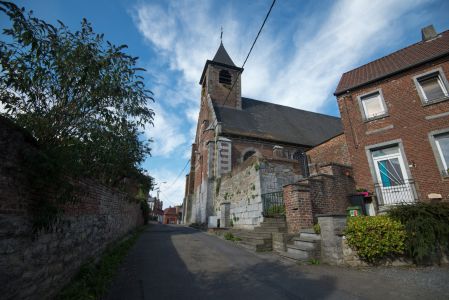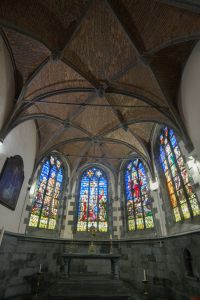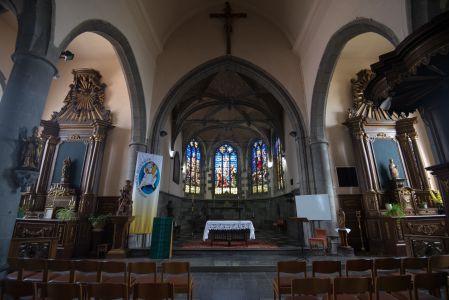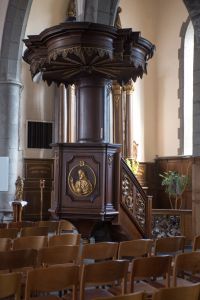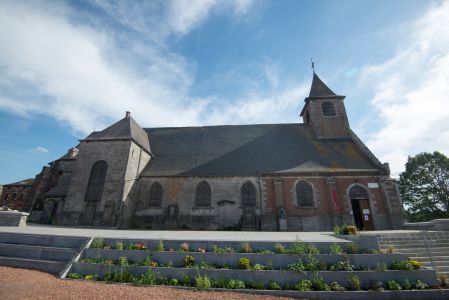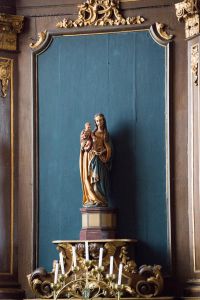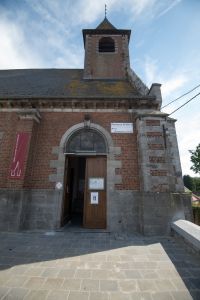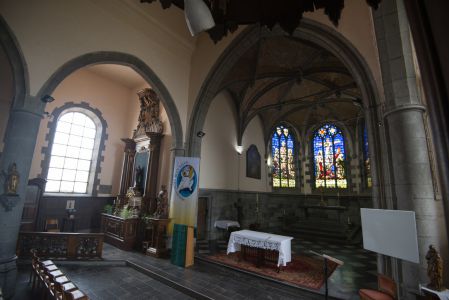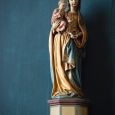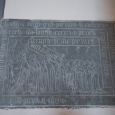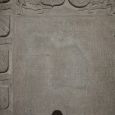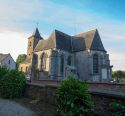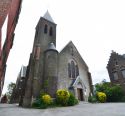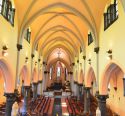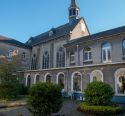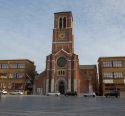Church | 1566-1777 | Gothic | Catholic Church





Map
Opening hours
01 January - 31 December
Mon -
Tue 9.00 - 16.00
Wed 9.00 - 16.00
Thu 9.00 - 16.00
Fri 9.00 - 16.00
Sat 9.00 - 16.00
Sun 9.00 - 16.00
Contact : Yves Dutrieux - fyn@skynet.be
+32 67 48 56 59 +32 495 78 12 83
Religious offices
every second Sunday 9.30 am
Description
The ancient church was destroyed between 1510 and 1529.The present church was built in 1531. In 1777 the church was enlarged and given a new bell tower, unfortunately with walls of brick.
Outside, an old stone carries the inscription Anno 1573 Ecco panis. This represents the Eucharistic coat of arms which was found during the restoration of the church in 1930-32.
A restoration of the church began in 1899 : it started with the placing of stained glass windows and in 1900 with an overall refreshing of the paintwork. Around 1910 the graveyard around the church disappeared to make way for the “Grand-Place”. The bones were dug out and carried away to the fields of Mignault.
The abbot Jules Gailly achieved another restoration in 1930-32: the high altar and its monumental altarpiece, the base and the choir stalls were all in wood and in ruins. They were replaced by an altar and base in stone. Stained glass windows were bought to embellish the windows of the choir.
Everything, from the choir and transept to the tower and entrance, although lacking any outstanding originality, has style and distinction. The latest restoration work was completed in 2016.
KIKIRPA : Photo-library online
Photos
Remarkable elements
Statue of Saint Gaugericus
Saint Gaugericus, Bishop of Cambrai, the patron saint of the parish on his console with complex Gothic moulding.
Notre-Dame de Marche
Notre-Dame de Marche, a polychrome sculpture from the 16th century, characterized by "swaying", that is, by a kind of imbalance in the attitude that offsets the body. Of great nobility of line, attitude and expression. It emerges from the physiognomy: dignity, greatness and affability.
Bas-relief of the funeral monument of Pierrart li Coffrier
Bas-relief of the funeral monument of Pierrart li Coffrier, who died around 1441. A beautiful bas-relief featuring Notre-Dame de Familleureux on one side and ten people belonging to the Pierrart Li Coffrier family on the other.
In a 1685 register, there is a long list of villages that were part of the brotherhood of the Virgin of the Family, notably Marche-lez-Ecaussinnes, and whose inhabitants made the pilgrimage. On September 9, the population of Marche still goes on an annual pilgrimage to Familleureux.
Translated with www.DeepL.com/Translator
Choir and vault
The choir, covered with a beautiful vault of vintage brick "1566" warheads, is built on a base bearing the mark of Jacquemart Boulle and Polet Moreau. Restored in 1931, the vault executed in gothico-Renaissance of the Plantagenet form, is one of the rare specimens of the genus in Belgium.
Painting "Descent from the Cross"
A painting "Descent from the Cross" by the Turinese master Disbecq, executed in 1732, is visible in the choir.
Thombstone of Pierre De Vooght
The large tombstone of Pierre De Vooght, known as de Gryse, lord of Marche-lez-Ecaussinnes, is located behind the baptismal font. The town hall of the time, having carried out renovation and embellishment work by removing the old abandoned cemetery and levelling the town square, was surprised to discover a stone 2m80 long and 1m50 wide by 0.25m thick. This recovered stone revealed a magnificently worked face in the centre of which we can read: " ICI REPOSENT MESSIRE PIERRE DE VOOGHT DIT DE GRYSE, CHEVALIER HEREDITAIRE DU SAINT EMPIRE, SEIGNEUR DE MARCHE, SIPLY, FONTENELLE, etc... ". (Here rests Lord Pierre De Vooght, called the Gryse, hereditary knight of the Holy Roman Empire, Lord of Marche, Siply, Fontenelle, etc.)



